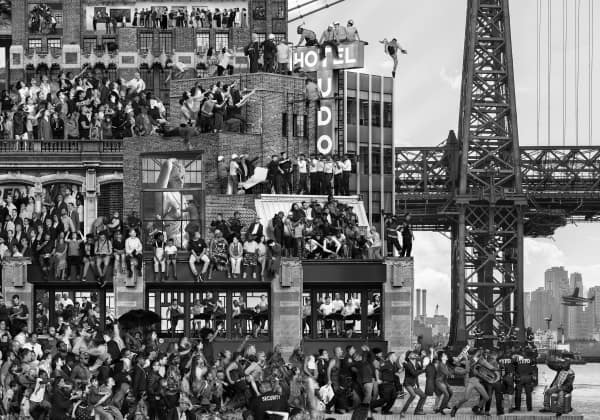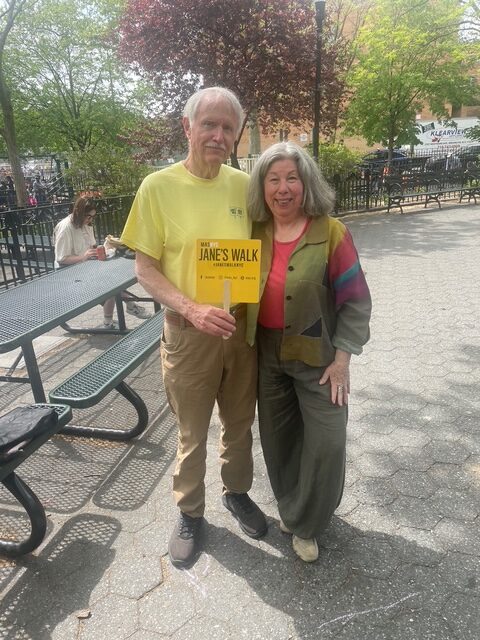The JR Chronicles exhibit at the Brooklyn Museum is one worth the checking out, and you have until May 3 to do so.
The show grabbed my attention when I learned that it featured photos and stories from all kinds of New Yorkers. With audio stories from hundreds of people, as well as fascinating pictures of new arrivals, longtime residents, and everyone in between, it did not disappoint.
JR, who is from France, has given a captivating TED talk (available to watch at the exhibit) and is highly regarded for his street art and graffiti but remains best known for his photography, which gives visibility to everyday people.
In the early stages of his career, which the exhibit also encompasses, he produced photographs of French immigrants who were living in the suburbs outside of Paris. Various arondissements within the French capital displayed the images.
For his New York City exhibit, he drove a van to neighborhoods in all five boroughs and had people come in to be photographed in front of a green screen. He let them choose how they wanted to be portrayed.
JR’s photo locations included Bedford-Stuyvesant, Williamsburg, Flatbush and Coney Island in Brooklyn; Jamaica, Flushing and Jackson Heights in Queens; two areas in the Bronx; one location in Staten Island; and five different neighborhoods all over Manhattan. Sometimes he had trouble getting people to talk and at other times he couldn’t get them to stop reflecting.
Ultimately, JR was able to get more than 1,000 people to tell stories about their life and how New York City is meaningful to them and what they get out of living here. Some told long stories and some told stories that were brief, and some talked about serious issues and some not as serious.
The epic mural displayed on the enormous walls of the Brooklyn Museum’s first floor is accompanied by audio recordings of each of the New Yorkers that were photographed. A fascinating part of the exhibit was being able to use one of the touch screens to click on a picture of a person who is also on the mural to be able to hear their personal story.
The running audio commentary, which goes from neighborhood to neighborhood throughout the city, has a lot to offer. There was an option to read along while the person was speaking in case their accent was hard to understand, which was helpful in some cases.
The exhibit shows how, after taking everyone’s picture, JR used technology to place their faces on various high-rises across the city. He did this to center ordinary people in spots where there would usually be advertisements with celebrities.
JR photographed college students, train conductors, actors, firefighters, police officers, businesspeople, retail workers, and immigrants. At the Brooklyn Museum, one can look up at the wall and see images of people who all have unique stories to tell about their lives. Everyone is standing or sitting close enough to touch, which speaks to the nature of New York City, where so many people live so near one another.
The JR Chronicles marks the artist’s first major exhibition in North America. Previously, in 2017, JR assembled scaffolding to support an enlarged photograph of a little boy on the Mexican side of the U.S.-Mexico border. The memorable image gave the impression that the toddler was peering curiously over the fence.
The following year, JR partnered with TIME magazine to produce their cover story, featuring over 200 Americans who have been impacted by guns, including “hunters and activists, teachers and police officers, parents and children.” His “Guns in America” is now also displayed at the Brooklyn Museum.
This exhibit was part of Brooklyn Falls for France, a “cultural season organized by the Cultural Services of the French Embassy and French American Cultural Exchange (FACE) Foundation in partnership with Brooklyn venues.”
Author
Discover more from Red Hook Star-Revue
Subscribe to get the latest posts sent to your email.












